TRIP DIARY TO KESENNUMA: What has an intern in active service learned from Kesennuma on natural disaster, international cooperation and life as it ought to be?
[Original by Ayane ISHIZUKA, 2018 Intern for Home Page Renewal (October 2, 2018); Translated by Y. Nakamura/S. Altman]
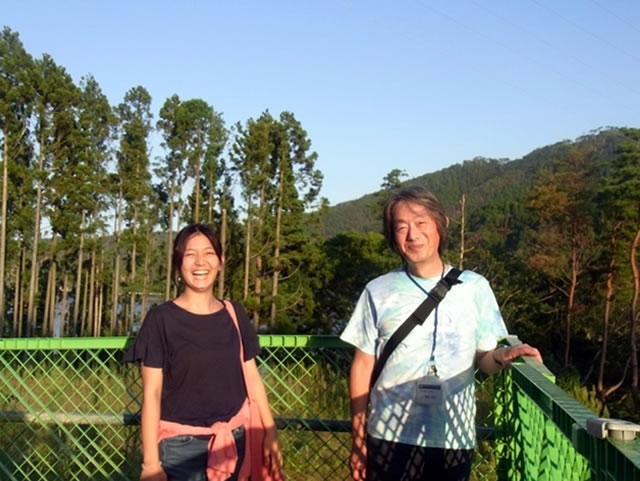
Together with Mr. Yokoyama. Photo taken by Mr. Shimizu.
Hello, everyone. I am Ishizuka, an intern. I made a field trip to Kesennuma together with Mr. Toshihiro Shimizu, JVC’s Vice President, and Mr. Yokoyama, who is in charge of the Minami Soma Project. It was arranged as a fact-finding tour so that it would be reported in the Anayama-machi Sanma* Festival to be held in Anayama-machi, Nirasaki city, Yamanashi prefecture on the 13th of October 2018. [*Sanma or Pacific saury is a sea fish living in the Pacific Ocean.]
The Sanma Festival will be held for the sixth time this year. While people are generally getting less interested in the Great East Japan Earthquake, this event will be designed for an opportunity to remember it by eating sanma. It will offer a chance of knowing current situations in damaged areas and thinking of local residents’ lives in the future.
I would like to write a report on JVC’s supporting projects in Kesennuma which I have learned of from two experienced NGO staff members through this field trip. I am also reporting about how the residents will live life from now on. I would like to remember the Great Earthquake having occurred seven years ago and think of how to respond to a natural disaster in the future.
Have you been in a disaster area, not limited to Kesennuma?
I suppose many readers of JVC’s blogs might be interested in international cooperation. It is true you might connect an image of international cooperation to overseas support instead of domestic support, but that is not correct.
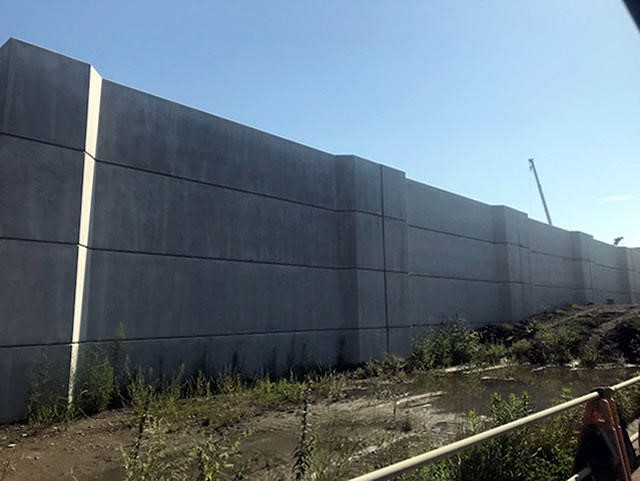
A seawall; talking with Mr. Shimizu, “It’s like a separation wall in Palestine.”
I think that NGOs are made up of staff members who will do something in order to support suffering people, regardless of national interest, not only limited to overseas but also in domestic areas. Additionally, I feel JVC is distinctive of having many staff members who are earnestly engaged in the fundamental problems. The Great East Japan Earthquake was, as you know well, so catastrophic that JVC had such a sense of crisis that we will have to do something.
At the beginning of the disaster, JVC helped the Social Welfare Council to set up and manage a disaster volunteer center by making use of our own experiences of conducting emergency relief activities overseas. Thereafter, JVC was involved in a project for community development and house reconstruction in the Shishiori district. This project in Kesennuma was finished in March 2018.
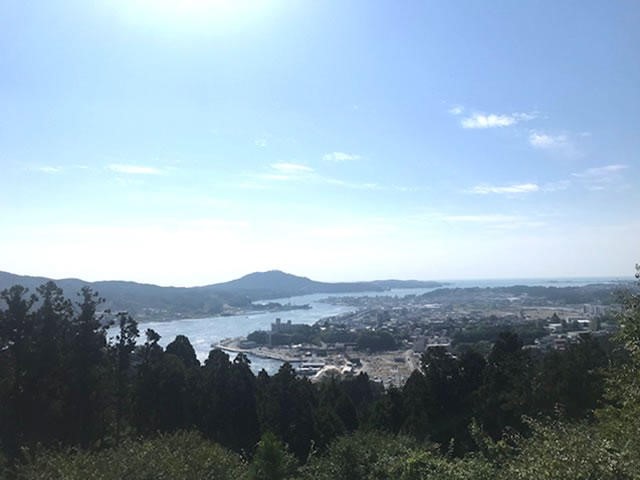
Scenery in Kesennuma city.
Mr. Shimizu and Mr. Yokoyama gave me this story during our visit around JVC’s project sites. The facts could be stated in only three sentences, but I wondered how enormous efforts and memories were contained therein. It truly gave me a different impression because I did not only visit project sites but I also listened to project staff’s explanation.
They explained to me about damages in Kesennuma city by referring to their own thoughts and memories. Accordingly, I could understand that disasters are not only looked at as the number of casualties but also as activities or problems of local residents in damaged areas. The media’s news would not give me such a kind of information. Therefore, I thought it was important to go to a disaster area after all. I also had a feeling of distance between the disaster area’s reality and my knowledge about it acquired through the media.
The end of a project does not mean the end of problem. The relationship between JVC and local people has not ended either. Since he was formerly in charge of the project, some local residents said to Mr. Yokoyama at this time, “Please come to see us again.” Somebody else gave him a gift, saying “Please take this.” I was also given a gift of mekabu, the bottom of seaweed wakame. It was so delicious!
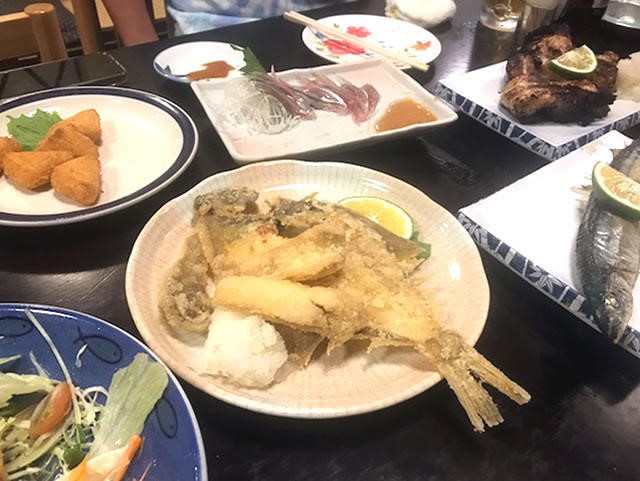
A dinner in Kesennuma. Local seafood is fresh, delicious, and cheap!
Since they completed reconstructing their houses with JVC’s support in Kesennuma, the residents delightfully said, “We have reconstructed this place!” Therefore, I thought JVC might help people in conducting activities of their own will and connect people to each other. The residents of Kesennuma were so precise about the details of their houses. For example, paying special consideration to details such as sunny conditions, parking lots and tree planting. You are really recommended to come to see the look of those houses in Kesennuma. I personally wanted to live in this type of house.
The media only gives us fragmentary pieces of news about the situation in Kesennuma and other damaged areas. There are actually some local residents still suffering from the situation or trying hard to overcome it. I reconfirmed it was the same to help and attend to such people whether domestically or internationally.
Thinking about the reason why JVC carried out Kesennuma project, I could feel myself understanding what we overlooked in the past and should do in the future.
How should we react to a disaster?
Our team visited the Rias Ark Museum of Art during the trip to Kesennuma. It is the one and only museum in Kesennuma that usually displays reference material of the Great East Japan Earthquake. It does not only display photographs and commodities, but also the real voices that its curators collected by taking pictures of or interviewing local residents in damaged places.
The museum presents a theme, which is “How should we express the Great East Japan Earthquake and make the best use of it for the local benefit?” There were displays set with key words that gave us an opportunity to rethink our past lives.
Restoration means taking back the ordinary life that people had lived before the disaster happened. You could not achieve it by preferring to get immediate profit or happiness. Nature was destroyed by activities that aimed at controlling it with science and money. Disaster shall surely happen again. Although people who suffered from disaster cannot forget it, will anyone else remember it? How can you transmit it to people who are still uninformed? If you did not have an opportunity to reflect and learn about it, you might repeat the same mistake. I hope the memories of the Great East Japan Earthquake shall not fade with time and can be utilized in life in the future. Only people can convey this to others.
I felt this kind of impression while reading through those key words.
A visit to a disaster-stricken place
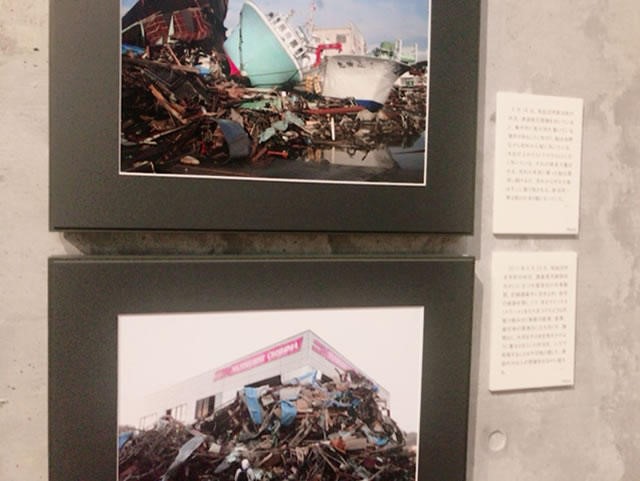
Both pictures and captions are displayed at the museum.
This was my first visit to a disaster-stricken place. When I was a first-grade student at a middle school in Chiba, I had experienced the Great Earthquake. Thereafter, I had only got information about it through media’s broadcasting reports and images. After I visited a disaster-stricken place and spoke to local people, I really felt how much I let the Great Earthquake fade with time. What had I learned in these seven years? . . .
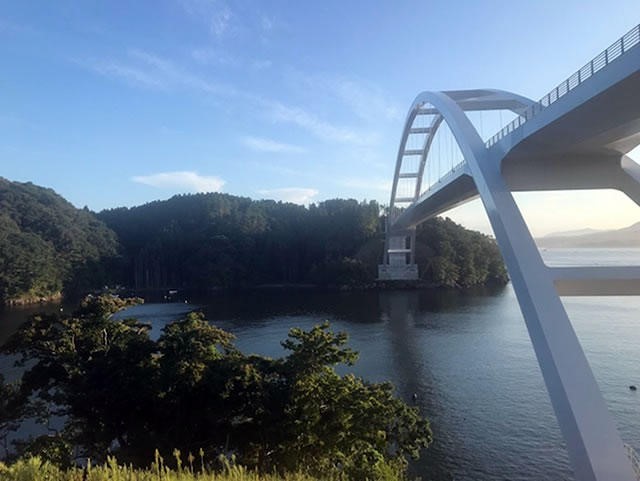
The Kesennuma Ohshima Big Bridge. Its nickname is Tsuru-Kame (crane and turtle) Big Bridge.
I might have overlooked domestic problems, since I had more interest in international cooperation. So, it may sound strange, if I suggest the following to you who are interested in international cooperation. However, if you find yourself unfamiliar with domestic problems in Japan, I seriously hope you would visit a disaster-stricken place such as Kesennuma. You might get a hint about thinking of international cooperation as well!!
To those who have not had the opportunity or time to think about the Great Earthquake or those who wanted to go but couldn’t muster up the courage, I would like to convey that Kesennuma was filled with a community of warm-hearted people, delicious seafood and nature.
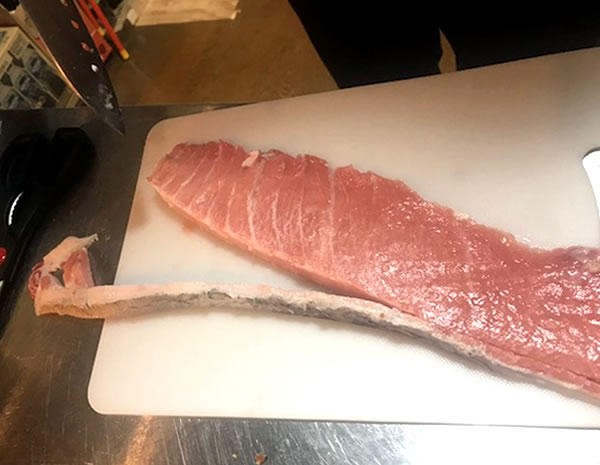
Real hon-maguro, an authentic tuna fish!!
When visiting Kesennuma, I dropped in a guest house called “Rikuzen-kaijou”, which was close to the station. It was so homely that local people gathered there. I also met a foreign student who was studying in Japan. He fell in love with the warm-hearted local people and was now teaching English at a school in Kesennuma. There are various things beyond media’s coverage in Kesennuma. If you are tired of living in a city, I hope you would visit there at this opportunity (although it is very cold in winter).
Finally, I wouldn’t forget main purpose of my report! The Anayama-machi Sanma Festival will be held on the 13th of October 2018. Visiting the festival and eating delicious sanma is one of the ways to understand Kesennuma. I am also joining. I hope you will come together!!
Share This: